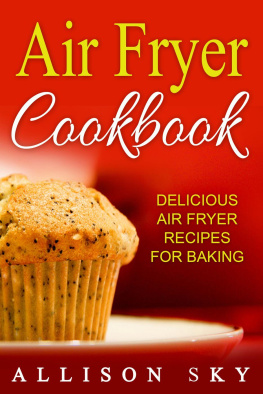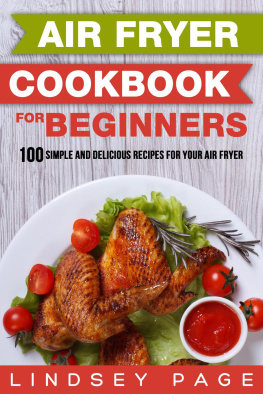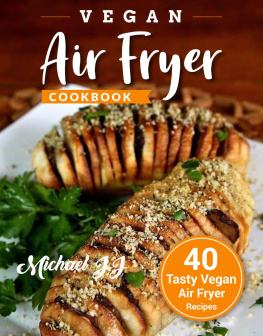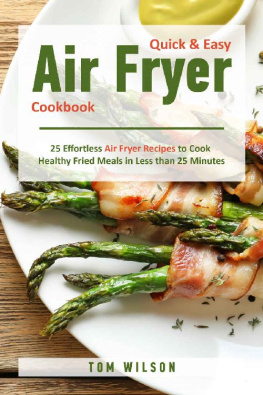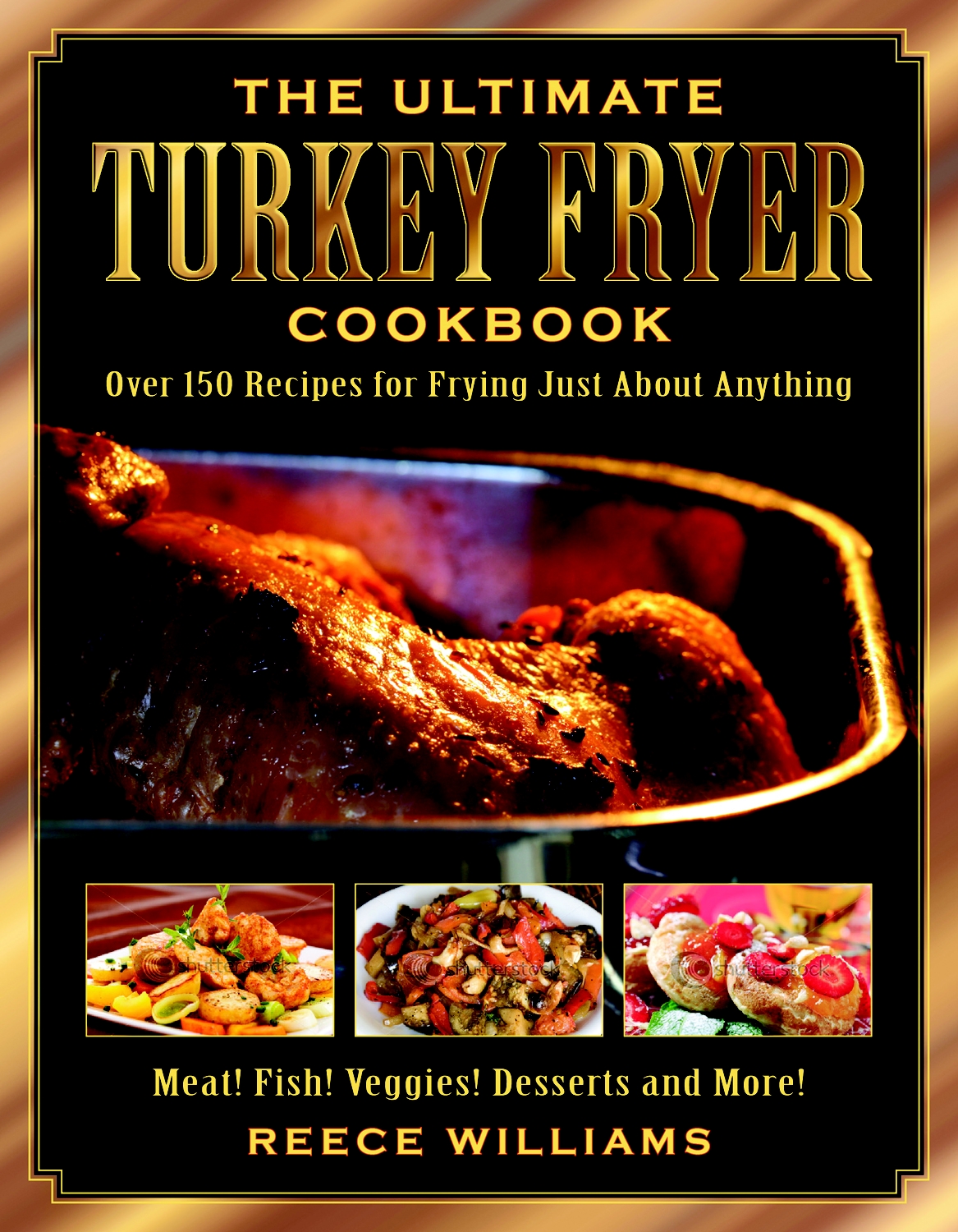Acknowledgments
F irst off, Id like to thank my late father, Edgar Williams, for his lessons about innovation. Without his farsightedness, Cajun Injector would have never happened. His spirit is still with me on every trip I take and every TV appearance I make. In a way, hes still teaching me.
J. B., my momthats short for Jeanne Belzonstaught me the basics of kitchen operation and design and how all that applied to the creation of recipes that went beyond the usual. What I got from my father in pushing the envelope perfectly complemented the firm foundation of what had gone before that I got from my mother. Thats why together we all made a huge success of The Front Porch restaurant, then later Cajun Injector.
Id also like to thank Mary, my wife, for sticking out the thin days when Cajun Injector didnt know how to grow except in fits and spurts. And in the middle of it all, she birthed four daughters and finished out a career as a Delta Airlines flight attendant. Those planes didnt need engines. All they needed was Mary.
Those who put the nuts and bolts together to get this cookbook up and running have my utmost respect, admiration, and sincere appreciation for their long hours, disheartening setbacks, and hot kitchens.
Muriel Williams, aka Wuzzie, my 3rd born of four daughters, helped me in the food business since she was 10 years old. She became so interested in the management side of my business, at the age of 12, she decided to run for the CEO. Thank God she settled for helping me in other areas. Muriel has been tremendous help at the Front Porch Restaurant ( the birthplace of our injectable marinade business). She is now planning to begin her first year at LSU. Wuzzie has essentially taken on the entire edit job for the republication of this book. Many thanks to Wuz.
A big thanks also goes to research chef David Gallent. David is one of the nations best chefs when it comes to fresh ideas in old pots. Davids efforts to make this book come alive were nothing short of miraculous, and the recipes prove it. I know youll enjoy them.
Chapter 1
FRYing Basics
| Successful Deep FRYing (tips for) |
| Cooking Oil Options |
| Essential Equipment for Deep Frying |
| Thermometer Know-How |
| Food-Safe Temperatures |
| How to Use the The Chef Williams Original Marinade Injector |
| FRYing Times |
Successful Deep FRYing
I n order to get the food to the desired internal temperature when frying, high heat is needed. Fat and oil at high temperatures dont mix well with human physiology, so be sure you follow these safety tips.
- Use a pot, basket, and burner designed for deep-frying. It should be large enough to hold the turkey and enough oil to completely cover the turkey. (It can take up to 5 gallons of oil.)
- Do not overfill the fryer with oil. To estimate how much oil you need, before unwrapping the frozen bird, put it in the fryer; add water until the turkey is submerged. Remove the turkey and note the water level. This is the level your oil should reach.
- Have thermometers for taking oil and meat temperatures and long oven mitts on hand. Keep a fire extinguisher (appropriate for grease fires) nearby.
- Find a level dirt or grassy area on which to position the fryer. (Wooden decks are not appropriate; they can catch fire. Also, oil will stain concrete.) Do not fry your turkey indoors or in a garage or other attached structure.
- Only fry a turkey that is under 12 pounds.
- Thaw the turkey completely.
- Do not stuff the bird.
- Remove any plastic pieces from the turkey, such as a plastic tie to hold the legs together or the piece that pops up when the turkey is done. These plastics will melt in hot oil.
- Cook meat or poultry to the proper doneness. (See Food-Safe Temperatures, page 13.)
- Keep children and pets away from the cooking area, and do not leave the hot oil unattended.
- Allow the oil to cool completely after use. Discard the oil by pouring it back into the original container using a funnel. If you plan to reuse the oil (only if the food cooked in the oil did not burn), strain it through 100-percent-cotton cheesecloth. Store in a covered container in the refrigerator. Reuse the oil once or twice within one month.
For more information, visit the National Turkey Federation Web site at www.eatturkey.com or call 202/898-0100, or call the USDA Meat and Poultry Hotline at 800/535-4555.
COOKING OIL OPTIONS
There are several types of oils that are great for deep frying. In general, choose an oil that is free of impurities. (Impurities in oil are what gives it a rich flavor and dark color. Impurities also cause the oil to smoke at a lower temperature.) Corn, peanut, soybean, canola, cottonseed, and safflower oils all work well for deep frying.
Common Oils and Smoke Points
| Safflower oil | 450F |
| Cottonseed oil | 450F |
| Canola oil | 437F |
| Soybean oil | 410F |
| Peanut oil | 410F |
| Corn oil | 410F |
| Sunflower oil | 392F |
| Extra-virgin olive oil | 250F |
ESSENTIAL EQUIPMENT FOR DEEP FRYING
Heavy gloves or oven mitts
Deep-frying thermometer
Instant-read or meat thermometer
Paper towels
Kitchen utensils such as tongs, meat fork,
large slotted fry spoon, and/or fry basket
Plates or platters lined with paper towels
(to drain fried foods after cooking)
Fire extinguisher
THERMOMETER KNOW-HOW
Use a deep-frying thermometer to check the temperature of the oil in the turkey fryer. This type of thermometer is made to measure extra-high temperatures.
To check the internal temperature of meat or poultry, use a meat thermometer or an instant-read thermometer. Both types should be inserted into the meat or poultry after its removed from the hot oil. The instant-read thermometer will give a reading in seconds.
FOOD-SAFE TEMPERATURES
Its always a good idea to check the internal temperature of cooked meat and poultry to ensure correct doneness. Use the following temperatures from the U.S. Department of Agriculture as your guide.
| Ground beef, pork, veal | 160F |
| Ground chicken and turkey | 165F |
| Whole chicken, turkey, duck or goose | 180F |
| Poultry breast | 170F |
| Poultry legs, thighs and wings | 180F |
| Fresh pork |
| Medium | 160F |
| Well Done | 170F |
| Fresh beef |
| Medium rare | 145F |
| Medium | 160F |
| Well done | 170F |
How to Use the Chef Williams Original Marinade Injector
- Attach needle to Chef Williams Original Marinade Injector by turning clockwise until snug. Do not overtighten the needle.
- IMPORTANT: Be careful handling raw meat. Always pour marinade into a separate container before drawing it into the Injector. This will keep unused marinade from becoming contaminated.
- Draw marinade into the Injector by pulling up the plunger.
- For best results, insert Injector into the meat at different angles through the same hole. See illustration, right.



